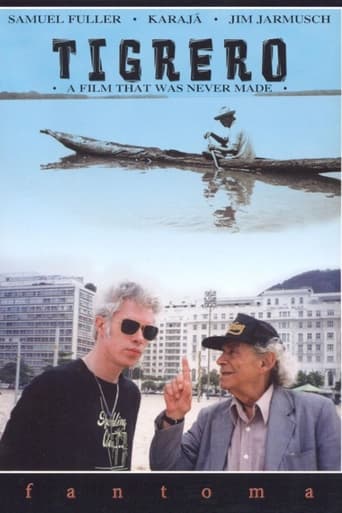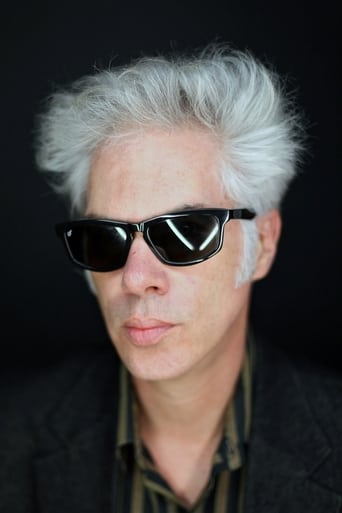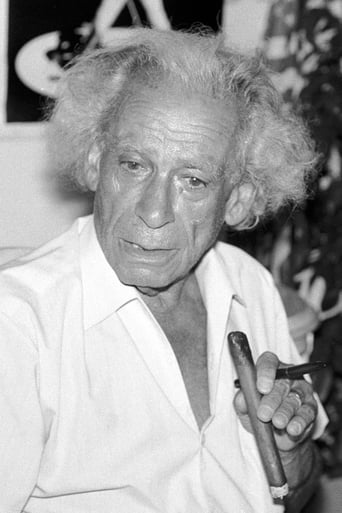

Tigrero: A Film That Was Never Made (1994)
In 1993, Sam Fuller takes Jim Jarmusch on a trip into Brazil's Mato Grosso, up the River Araguaia to the village of Santa Isabel Do Morro, where 40 years before, Zanuck had sent Fuller to scout a location and write a script for a movie based on a tigrero, a jaguar hunter. Sam hopes to find people who remember him, and he takes film he shot in 1954. He's Rip Van Winkle, and, indeed, a great deal changed in the village. There are televisions, watches, and brick houses. But, the same Karajá culture awaits as well. He gathers the villagers to show his old film footage, and people recognize friends and relatives, thanking Fuller for momentarily bringing them back to life.
Watch Trailer
Cast


Reviews
Very very predictable, including the post credit scene !!!
Very Cool!!!
Blistering performances.
Although I seem to have had higher expectations than I thought, the movie is super entertaining.
In the early 1950s, 20th Century Fox invited Samuel Fuller to make a picture in Brazil about a jaguar hunter (John Wayne was tipped for the role) falling in love with a woman (Ava Gardner) he helps to rescue as she flees through the jungle with her cowardly husband. Fuller headed for Brazil to make a preliminary study and settled in a village of the indigenous Karaja tribe. He scouted locations, shot some footage of local nature and customs, and discovered some elements that he might work into the screenplay. In the end, however, the whole project came to naught when insurance companies refused to provide coverage for a shoot in what was then a remote and potentially dangerous part of the world.In Mika Kaurismäki's 1992 documentary, TIGRERO: A Film that was Never Made, Sam Fuller returns to the same village he based himself in four decades before. American indie filmmaker Jim Jarmusch tags along as the interlocutor to which Fuller recounts the whole Hollywood story and comments on how rural Brazil has changed since his first visit. Jarmusch is also interested in the culture of the Karaja, taking photographs of the village (some of which are included as extras in the DVD release) and narrating in voice-over some of their traditions and practices. The downside of this is that the duo talk about the Karaja according to the noble savage stereotype, depicting them as an idyllic people without a care in the world, and the film never confronts the challenges they might have faced now as modernity arrives, or forty years ago when life was no bed of roses either.The film has an inauspicious beginning, where Jarmusch asks Fuller in Rio de Janeiro why he's there, and it's obvious that this whole (very stilted) dialogue is scripted. Once they subsequently reach the Karaja village, their chats seem more real. The first thing they do in the village is project the footage that Fuller he had shot forty years before to the locals. The Karaja are amazed to see their long-dead relatives and friends. As one Karaja explains the visceral impact that this film footage had on him, Fuller tells him "That's called emotion," the same cinematic creed he professed in his cameo role in Godard's Pierrot Le Fou.Fuller is a funny character. He was already around 80, a wizened old man that seems only about half the height of Jarmusch, but he's full of energy and enthusiasm for this adventure. He appears almost invariably with a cigar in his mouth and a baseball cap and talks in this really old-timey New York Jewish accent. I honestly found him hard to understand at points, it's like watching someone speaking Elizabethan English step out into the world of 1992.TIGRERO doesn't seem a major achievement in documentary filmmaking, and after one viewing I don't feel in a hurry to ever see it again. Nonetheless, it was an enjoyable 75 minutes and I appreciated learning something about this part of the world.
An interesting documentary by Finnish filmmaker Mika Kaurismaki (brother of the more famous Aki). Filmed in the mid 1990s, it has Jim Jarmusch accompanying the legendary Samuel Fuller (who was in his early eighties by this time) to the Amazon forest to revisit the place where in the mid 1950s he planned to make a film. A film that, as the title says, was unfortunately never made. Fuller tells the story of the failed production. Tigrero, by the way, means a hunter of jaguars (which are called tigers in many parts of South America). Fuller says that John Wayne was going to play the role of the hunter in the movie, and Ava Gardner was set to co-star. It seems hard to believe that top Hollywood stars would be filming in a place that was back then (and still is) extremely remote, without any sort of modern facility. In fact, Fuller tells that one of the reasons the movie was never made was the difficulty of insuring the stars in such a potentially dangerous shooting. In many of the proposed settings for the film, the Kayapo Indians live, and it is interesting to get a glimpse of their lives. The movie is interesting, though perhaps of limited appeal (though you don't have to be a fan of Fuller or Jarmusch to enjoy this).
The image of hipster Jarmusch and Old-School Fuller wandering around like 2 characters in search of an epiphany was wacky enough. Place them in the middle of a Karaja village, with the amazing back-story of Fuller's flirtation with a jungle epic-that-never-was, and you've got a great little documentary that surpasses expectations--if in fact you had any. It's true that Jarmusch is absurdly out of place here, but that only ads to the surrealistic bent of the thing. And Fuller, a physical midget next to Jarmusch, is the one who is truly larger than life; a throwback to a time when directors truly dreamed and took action--the sort of character that Hollywood, in its increasing dependence on CGI, has conveniently squelched. We get to see a maverick, a dreamer, an egotist and a great observer of life in its myriad forms, who clearly loved every second of his time on this earth. The film is somewhat hampered by a lack of what a script man would call structure. And yet that didn't bother me because it was like watching a human circus unfolding: Here a Karaja ritual; there, Fuller fulminating about what coulda been, and everywhere around the amazing Mato Grosso, the real star of the story. Okay, it's no Aguirre, but if you love the process of film in its purest form, this is a terrific little flick.
I somewhat agree with the comments about the scripted components, but I don't think they really do any damage to the film.This docco has a lot of range, its tear jerkingly poignant in places, downright hilarious in others, and just astounding in others. The chief witchdoctors doing their elaborate ritual, fainly chanting 'Hollywood... Hollywood...' is a really transporting moment.The film definitely causes one to wonder about the future of the natives, whether they will go on as they have in their idyllic little universe.Strange thing is - I'm not actually that much of a Jim Jarmusch fan (yes I know he didn't direct this film but he would have had a lot of input), except for Dead Man which is a masterpiece. But this is a little gem.I recommend this film, its cute and beautiful.



